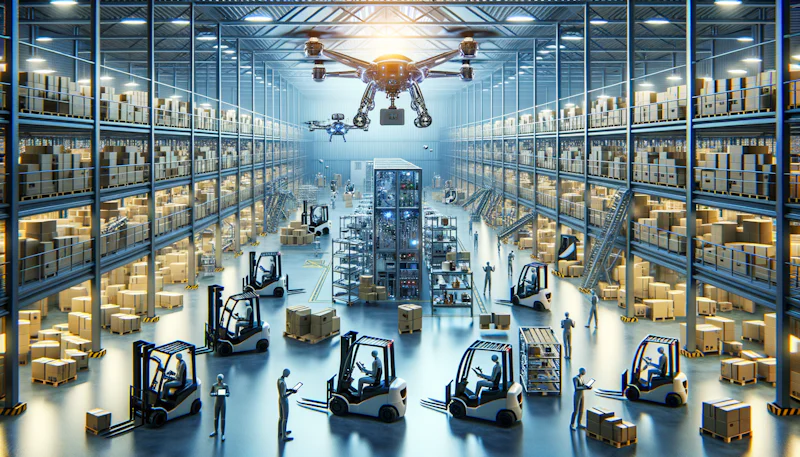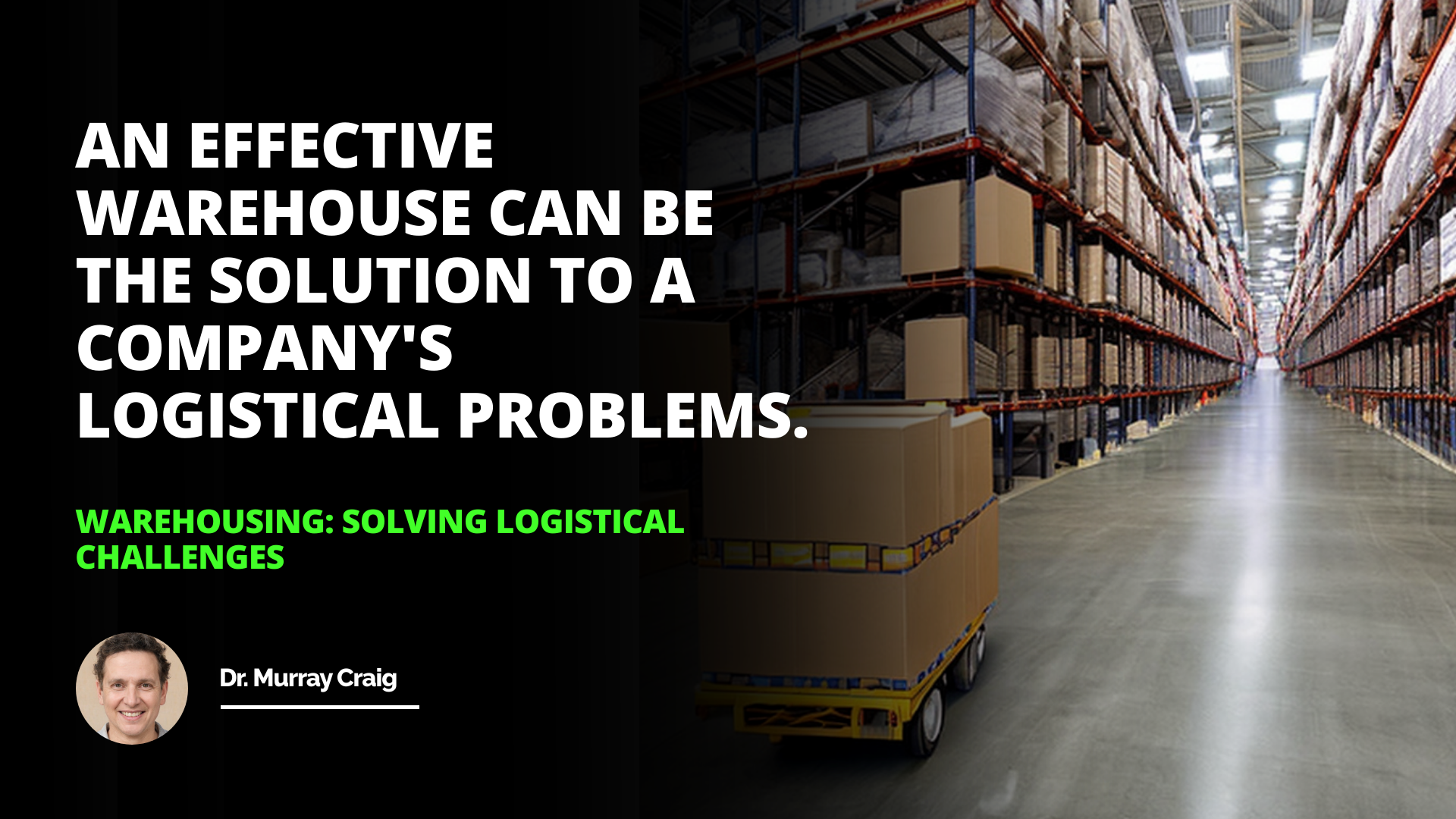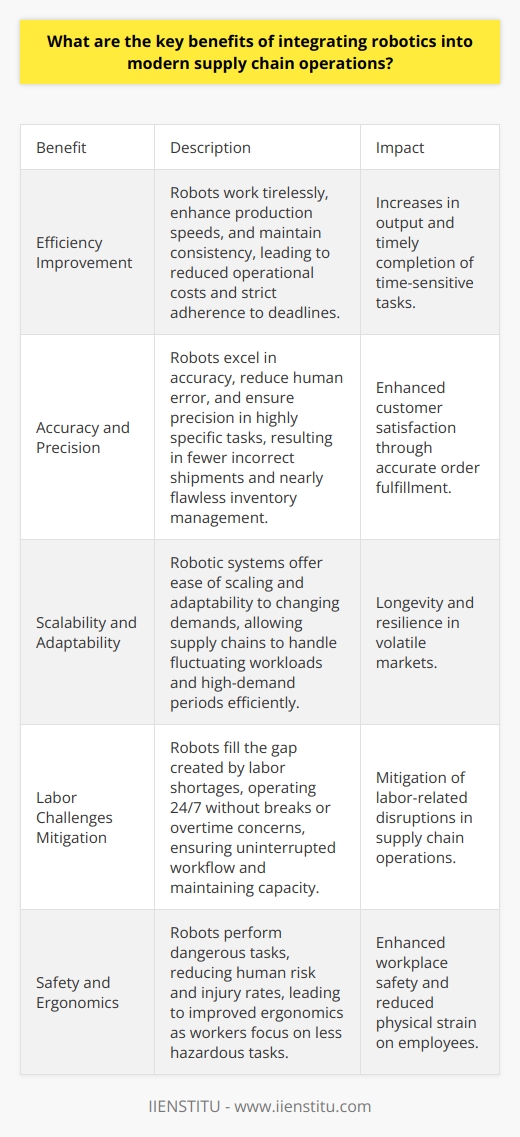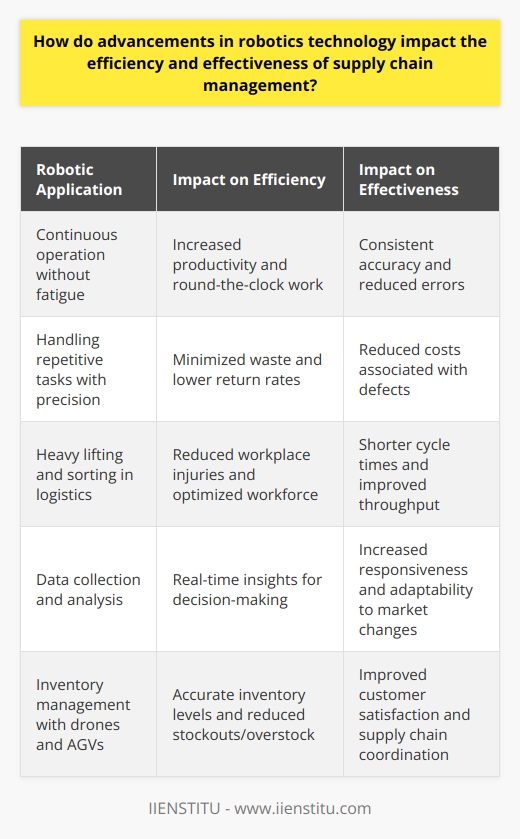The orchestration of modern supply chains hinges substantially on technological innovations, chiefly among which stands robotics. This synergy of mechanical engineering, computer science, and logistics has led to a ground-breaking shift in the way goods are moved, handled, and managed.
This article seeks to elucidate the profound relationship between robotics and logistics. It defines what is meant by robotics, offers a succinct overview of logistics, and interlinks the two to set the stage for a deeper exploration of their convergence in contemporary supply scenarios.
The Role of Robotics in Logistics
Improving Efficiency and Productivity
Robots embody the pinnacle of engineering designed to amplify efficiency and productivity within logistics operations. These mechanical proxies undertake repetitive and physically taxing tasks, thus enabling human workers to engage in more intricate and strategic responsibilities. This division of labor marks an enormous leap in operational velocity and precision.
For instance, robots are instrumental in palletizing goods, sorting packages, and transporting heavy materials across warehouses, often at speeds and consistency unmatchable by human capabilities. Deploying robots for such tasks not only accelerates processes but also augments the output quality by maintaining uniform standards throughout the entire logistic chain.
Reducing Errors and Costs
In the realms of logistics where profit margins are often zealously guarded, the role of robotics extends to minimizing costly human errors and substantially trimming down operational expenses. The incorporation of robotics within logistics does not only drive precision but proliferates an environment less susceptible to the fallibility inherent to manual undertakings. Industrial robots, equipped with advanced sensors and machine-learning algorithms, are less likely to commit the errors that human workers might, reducing waste and improving overall quality control.
Furthermore, once the initial investment is recuperated, the long-term savings on labor costs and lowered error-induced spendings are significant and beneficial to both businesses and consumers, making the logistics course fees for robotics integration a worthy venture.
Addressing Labor Shortages
The logistics industry often experiences the challenge of labor shortages, particularly during peak seasons or in economies with low unemployment rates. Robotics offers a compelling remedy to this dilemma, filling crucial labor gaps and providing steadfast operational continuity.
In distribution centers where the ebb and flow of orders can be unpredictable and demanding, robots provide a constant workforce ready to meet the exigencies of any surge in demand. They are especially adept at taking over roles that are labor-intensive, repetitive, or ergonomically risky, which often face high turnover rates.
This solution not only safeguards against the constraints of labor scarcity but simultaneously boosts capacity without the need for proportionate increases in human resources.
The Types of Robots Used in Logistics
Automated Guided Vehicles (AGVs)
AGVs are vital cogs in the automated logistics machine, often seen as driverless carts that transport items within facilities. Their functionalities are broad, extending from delivering components along a production line to moving products within a warehouse.
They follow predetermined paths, often using wires, magnetic strips, or sensors to navigate. An instance of their application is seen in companies like Amazon, where AGVs are utilized for moving goods to packing stations, thereby both enhancing productivity and reducing the physical strain on employees. AGVs are a testament to how robotics are paving the path for smart logistics operations where efficiency and safety are paramount.
Autonomous Mobile Robots (AMRs)
While AGVs follow fixed routes, AMRs represent a step further into the future with their ability to navigate autonomously using complex sensors and maps. These robots can dynamically plan their paths, interpreting the environment and reacting to changes, such as obstacles or shifting workloads. AMRs are revolutionizing order picking and material handling, offering scalability and flexibility that adapts to changing business needs.
An example of their use is in fulfillment centers, where AMRs can select and transport products, greatly accelerating the order fulfillment process and enabling businesses to meet the fast-paced demands of modern e-commerce.
Robotic Arms
Robotic arms are the stalwarts of industrial automation, prevalent in logistics for their precise and tireless operational capacity. Whether it’s picking, packing, or sorting, these articulated robots replicate human arm movements but with greater strength and unfaltering precision. One of the shining examples of their application is in the automobile industry, where robotic arms excel at assembling parts with pinpoint accuracy, increasing productivity while reducing the likelihood of defects.
This successful implementation across various sectors demonstrates their versatility and indispensable role in enhancing the logistical throughput.
The Impact of Robotics on the Future of Logistics
Potential Transformations in the Industry
The industry-wide integration of robotics foreshadows a monumental transformation in logistics. These changes anticipate the automation of not only simple tasks but also complex decision-making processes through the advent of artificial intelligence and machine learning. With robots becoming increasingly sophisticated, the possibilities for their application continue to expand.
It is not surreal to envisage a future where the majority of physical logistics operations will be performed by machines, with humans overseeing management and strategy. Online courses with certificates are already emerging in the field of robotics and logistics, preparing a new generation of workforce for this tech-driven future.
Challenges and Solutions
Despite the promised advantages, the integration of robotics into logistics does not come without its set of challenges. One of the main issues pertains to the high initial cost and the need for substantial infrastructure changes. Furthermore, there is the hurdle of workforce transition, as there are concerns about job displacement and the skill gap for managing these advanced systems.
Solutions to these challenges involve gradual integration strategies, investment in worker retraining programs, and the development of more cost-effective robotic solutions to ensure a smooth transition that benefits all stakeholders involved.
In conclusion, the significance of robotics in logistics is undeniable. Robots are fundamental in enhancing efficiency, decreasing errors, and addressing labor shortages within supply chains, while the various types of robotic systems like AGVs, AMRs, and robotic arms exemplify the adaptability and precision offered by this technology. As the industry prepares for a future where robotics take center stage, challenges remain — yet with thoughtful strategy and investment, these hurdles can be overcome.
The evolving nature of supply chains calls for a workforce that is as dynamic and innovative as the technology it employs, a consideration pivotal for those contemplating logistics course fees. In this brave new world of logistics, the balance between human ingenuity and robotic capability will be the crucible in which the most successful supply chains will be forged.








